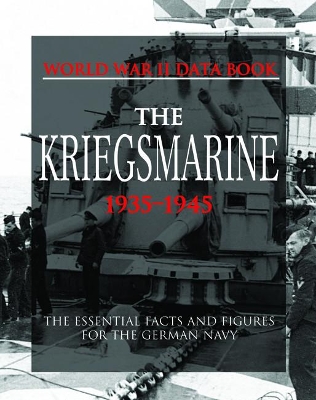World War 2 Data Book
2 total works
The German Third Reich had the most technologically advanced and innovative weapons industries in World War II, with aircraft, tanks and bombs that could match and beat anything else in the World. What is less known is the extent of Germany’s secret weapons development. Germany pioneered rocket and jet-propelled aircraft, the pilot-less plane, long-range rocket technology and `robot bombs’, and the world’s first super-heavy tanks.
Many of these weapons had a real impact on the course of the war. Following the invasion of the Soviet Union and the realisation that a state of conflict could continue for years, Hitler put great resources into the development of new and technologically advanced weaponry, in the belief that the production of`wonder weapons’ were the key to winning the war. This book gets behind this little-know aspect of the Nazi war machine to reveal the real extent of German secret weapons’ development.
Broken down by weapon types, the book includes exhaustive reference tables, diagrams, colourful maps and charts, presenting all the core data in easy-to-follow formats. World War II Data Book: Germany’s Secret Weapons, 1939–45 is an essential reference guide for anyone interested in the history and make-up of Germany’s secret weapons industry.
About the Author
David Porter has had a lifelong interest in military history. In recent years David has contributed articles and book reviews to the BBC History Magazine, the British Army Review and the Royal Engineers Journal. He is the author of The Essential Tank ID Guide: Soviet Tank Units, 1939–45 and Order of Battle: The Red Army in World War II.
Many of these weapons had a real impact on the course of the war. Following the invasion of the Soviet Union and the realisation that a state of conflict could continue for years, Hitler put great resources into the development of new and technologically advanced weaponry, in the belief that the production of`wonder weapons’ were the key to winning the war. This book gets behind this little-know aspect of the Nazi war machine to reveal the real extent of German secret weapons’ development.
Broken down by weapon types, the book includes exhaustive reference tables, diagrams, colourful maps and charts, presenting all the core data in easy-to-follow formats. World War II Data Book: Germany’s Secret Weapons, 1939–45 is an essential reference guide for anyone interested in the history and make-up of Germany’s secret weapons industry.
About the Author
David Porter has had a lifelong interest in military history. In recent years David has contributed articles and book reviews to the BBC History Magazine, the British Army Review and the Royal Engineers Journal. He is the author of The Essential Tank ID Guide: Soviet Tank Units, 1939–45 and Order of Battle: The Red Army in World War II.
Germany’s navy, the Kriegsmarine, played a critical role in the Third Reich’s attempt to restrict the flow of supplies, men and materiel from the United States to Britain in the early years of the war and from North America and Britain to the Soviet Union from 1941.
Such was the success of the U-boats in particular, by the end of the war more than 3000 Allied ships with a 14.5 million combined gross tonnage had been sent to the bottom of the sea. World War II Data Book: The Kriegsmarine, 1939–45 gets behind this massive organisation to reveal the workings of the German Navy through its organisation, command structure, economic resources, production figures, recruitment, training and philosophy.
Broken down by key campaigns and subject areas, the book includes exhaustive reference tables, diagrams, colourful maps and charts, presenting all the core data in easy-to-follow formats. World War II Data Book: The Kriegsmarine, 1939–45 is an essential reference guide for anyone interested in the history and structure of Germany’s wartime navy.
About the Author
David Porter has had a lifelong interest in military history. In recent years David has contributed articles and book reviews to the BBC History Magazine, the British Army Review and the Royal Engineers Journal. He is the author of The Essential Tank ID Guide: Soviet Tank Units, 1939–45 and Order of Battle: The Red Army in World War II.
Such was the success of the U-boats in particular, by the end of the war more than 3000 Allied ships with a 14.5 million combined gross tonnage had been sent to the bottom of the sea. World War II Data Book: The Kriegsmarine, 1939–45 gets behind this massive organisation to reveal the workings of the German Navy through its organisation, command structure, economic resources, production figures, recruitment, training and philosophy.
Broken down by key campaigns and subject areas, the book includes exhaustive reference tables, diagrams, colourful maps and charts, presenting all the core data in easy-to-follow formats. World War II Data Book: The Kriegsmarine, 1939–45 is an essential reference guide for anyone interested in the history and structure of Germany’s wartime navy.
About the Author
David Porter has had a lifelong interest in military history. In recent years David has contributed articles and book reviews to the BBC History Magazine, the British Army Review and the Royal Engineers Journal. He is the author of The Essential Tank ID Guide: Soviet Tank Units, 1939–45 and Order of Battle: The Red Army in World War II.

